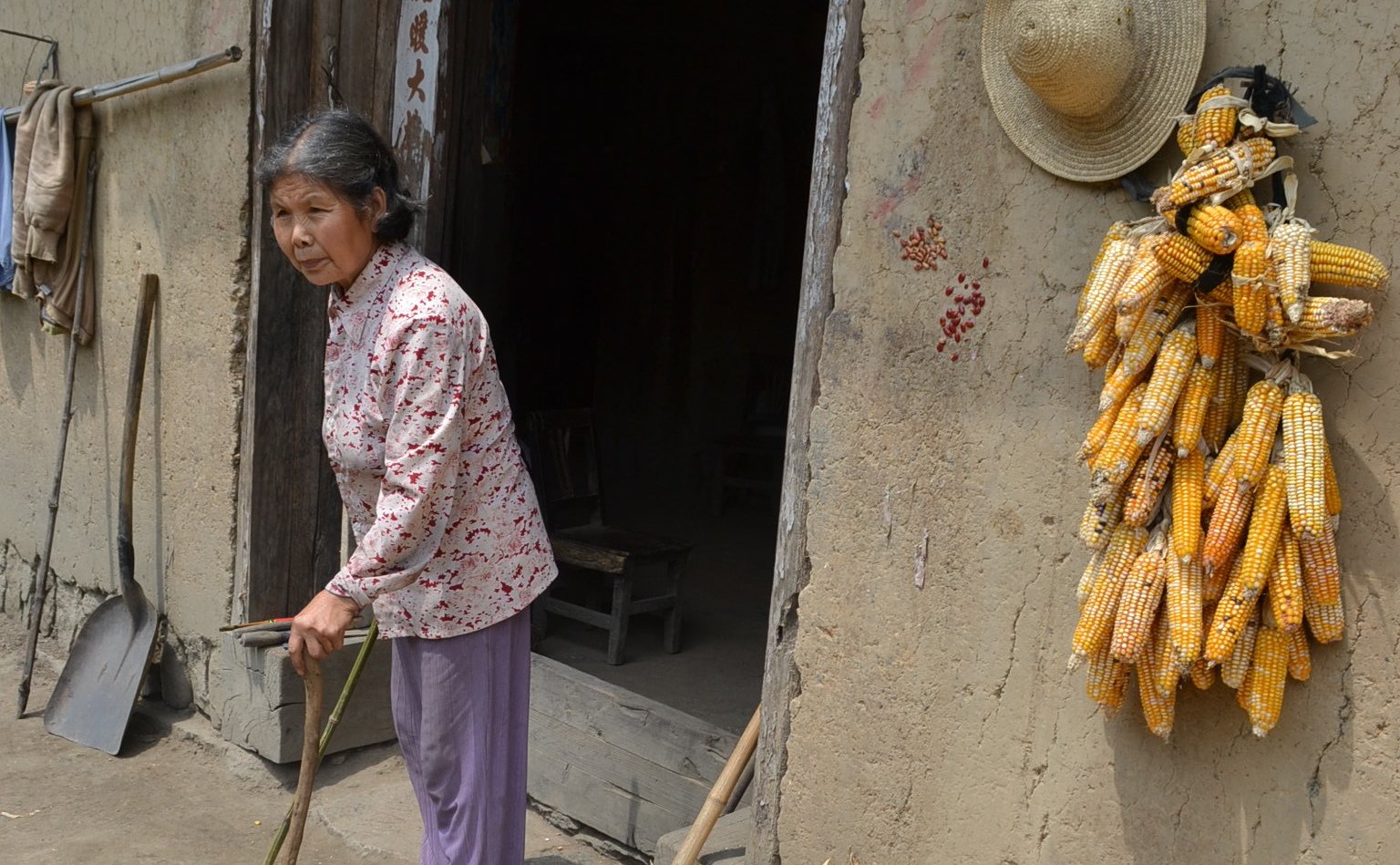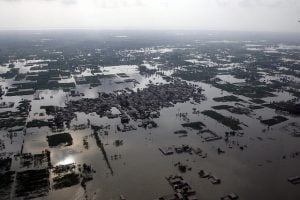Two years later, the construction of a resettlement area down the hill from the old village is being promoted as a “model community” for an ambitious government programme that aims to move 2.8 million people within Shaanxi province, mostly in the mountainous south, from unsafe areas to new housing.
Today, many people have moved into the development that features rows of new white townhouses. But many in Qiyan village say promises made in the wake of the landslide by officials have not been kept. Economic hardship for recently moved villagers shows the difficulty of trying to reduce rural poverty by government-led relocation, which often fails to provide landless rural residents with new opportunities.
“The environment here is better, but our previous life up in the canyon was better,” says Mrs Li, who relocated with her husband two years ago to the new town. “Before, I never ate anything from the government’s hand. I was independent. Now we don’t have any land and we are reliant on the government. We are in debt and we have to work, but there is not much work we can do now.”
Most villagers, however, agree the resettlement programme is a good idea and that they would rather live in the new area than remain in old homes up in the canyon. The village of Qiyan is strung along a craggy canyon reaching back from a small valley below. While intending to relocate those in danger from landslide, the process has left residents in the most dangerous areas behind.
“The governor said not to worry, that we would help these people after the landslide,” says Mr Huang, a villager who works in nearby Sichuan province but returns home often. “But now many of us still don’t have better homes; only people with money can afford to move into the new area.”
Threats of landslides and floods
More than 300 people remain in the canyon where the landslide occurred, mostly living in older houses that are at serious risk from landslides and floods. Villagers complained that initial promises of government loans and subsidies for moving have been unfulfilled or modified by local level authorities.
Earlier this year, the Shaanxi governor Zhao Zhengyong visited Qiyan again, to inspect the relocation process. He proclaimed, “for the residents in south Shaanxi’s mountainous areas, this will not just be a move from danger to safety, but a leap from poverty to a more comfortable life.” The programme, to be implemented over 10 years, would move more than double the 1.3 million people relocated for the massive Three Gorges dam project and would be the largest government resettlement programme in China’s history, costing over $16 billion.
But as the governor visited, Li Jun alleges he was locked in a house up in the canyon by local authorities. “After all that we have suffered, losing our homes and my whole family, township officials kept me up in the canyon in a house because they were afraid of me telling the truth; they only let me down when the governor had left.”
Li believes they were afraid that he would complain to the governor about the township government’s increase of the housing prices and failure to relocate residents who still remain in unsafe homes in the canyon.
Li finally obtained a new house in the development. But today, sitting in his new but sparse concrete-floored living room, he is upset. “The house cost 140,000 yuan, and I have not had land since 2010. My arm was injured in the landslide and I have no way to work!” He obtained a no-interest loan of 30,000 yuan in addition to a subsidy of 60,000 yuan because he lost family members. But he has been struggling to pay the rest.
While nearly all villagers agree that residents living in unsafe areas should be relocated to better housing, the relocation program involves more than simply moving people to new houses. It is in fact a wholesale transformation of a way of life.
Relocation and loss of income
This sudden transformation has had a traumatic effect on many residents. Moving from subsistence-based agricultural lifestyles to semi-urban lifestyles without proper job training or without provision of alternative means of living has left many residents without a stable source of income. Because the government is only providing a small portion of the cost of the homes, those who want to move must find a way to pay the rest, a sometimes-daunting proposition.
Mrs Li says that living in the new area has brought many new worries. “We have to pay for gas, cooking, electricity, it’s much more expensive. Before we could farm and eat whatever we wanted, it was much more convenient.”
Most elderly or middle-aged residents like Mrs Li have family members working in factories or cities like Shenzhen in the south. The majority of their income comes from these remittances. But still they say it is not enough to cover all their expenses, and finding working outside has become harder since the economic downturn in 2008.
The South-North Water Transfer project
In addition to alleviating poverty and danger from landslides, another motivation for the project is reducing the amount of farmland and agricultural runoff that makes its way into the nearby Han River. The Han River is one of the main sources for the south-north water transfer project that aims to bring water to arid North China, including Beijing. Signs on the hillside near Qiyan proclaim “send a river full of clean water to Beijing.”
See also: Drying up the Han River: the cost of South-North water transfer
Residents of Qiyan say much of their land had already been converted to forest land as part of the nationwide tuigeng huanlin subsidy scheme, which aims to pay farmers to plant trees on their land, and in turn slow desertification and reduce pollution from farming.
Mrs Li, like many of her neighbors, say their children working abroad will eventually return home. But it’s unclear what opportunities they will have. The relocation project, while seeking to move farmers to better homes, has often had the effect of removing them from their land, thereby removing a vital safety net. If relocation efforts fail to provide job training and opportunities for so-called “ecological migrants”, they could create as many new social problems as they solve, not to mention exacerbating China’s rapidly decreasing arable land area.
China’s urbanisation has lifted hundreds of millions from poverty. But as the country enters an era of rising labour costs, creating jobs for people moving to urban areas will be a challenge. In 2008, many experts said that migrant workers laid off in the economic downturn could return to their rural land as a backup; but in areas like Qiyan, most farmers no longer have land even though they are officially classed as “rural”.
“There is no work here. Do you see opportunity here?” Complains Ms Wang, a resident of nearby Shuangxing village who recently moved to new apartment-style housing. “It’s a little nicer down here, but we don’t have much here to support us. All our land is gone.”
Some names have been changed in this article to protect the identity of the people involved





